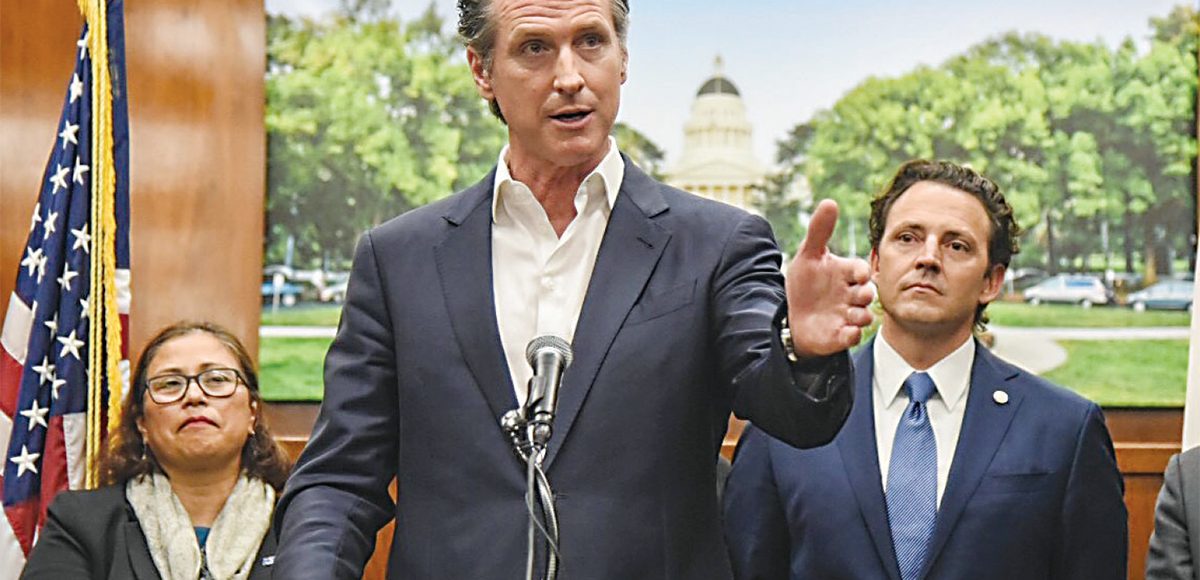Since March 19, Californians have been tasked with remaining at home in order to help curb the spread of COVID-19, which has thus far infected more than 3.3 million people globally, including 23,000 in Los Angeles. That directive may change in a matter of weeks according to Gov. Gavin Newsom, who on April 28 unveiled a four-point plan for moving the state out of its current stay- at-home order.
“I think the path that he is outlining is the appropriate path,” Beverly Hills Mayor Lester Friedman told the Courier. “I think the economic impact is going to be significant. I think we’re going to see several businesses that are not going to reopen and that’s unfortunate. I just think that we need to be proactive in supporting our businesses.”
Predicated on what appears to be a stabilizing of both the number of cases and deaths from COVID-19, Newsom said the state would soon begin to lift restrictions on lower risk workplaces, in addition to reopening childcare facilities and schools.
He described the stabilization with some measure of “cautious optimism,” noting that California never experienced the surge of cases like other parts of the nation. He cautioned that if the state does reopen too soon, there could be a second wave that could potentially prove more deadly than the first, which has so far claimed the lives of more than 1,800 people statewide, including over 1,111 in Los Angeles County.
“Because of your good work on physical distancing, social distancing, because you have overwhelmingly abided by the stay-at- home order, you bought us time,” Newsom said during Tuesday’s press conference on the state’s COVID-19 response. He underscored that the reason that the state is even able to consider such modifications is a direct result of people having abided by the stay-at- home orders. “If we pull back and we modify our stay-at-home too early…then we have to have the ability to fix it…in terms of our capacity to deliver on the promise of what we’re promising today for this roadmap in reopening.”
The phased approach to reopening California, which begins with lessening restrictions around businesses, schools and childcare, relies on business and education leaders, including those on the front lines, to ensure that the virus does not spread.
As outlined, the four-phase approach starts now with businesses planning the workflow and focusing on the supply chain, in addition to understanding the physical and environmental factors that will come into play in keeping the virus at bay by instituting protections for workers and customers. As part of this phase, hospitals are expected to continue to build up capacity and supplies of protective equipment.
The second phase, which Newsom said he expected would happen in the coming weeks, will be the reopening of “lower-risk” businesses, including retail stores with curbside pick-up, manufacturing and offices. “Phase two is really the phase that is upon us we believe in the next few weeks and perhaps the most important, we believe, in getting everybody’s attention and focus so we can at least prepare for it in real time,” he said.
Although Newsom has yet to define precisely what stage two will look like or how the state will roll it out, the reopening of various businesses is expected to come gradually in stages in order to allow the lower risk sectors to adapt and reopen in a way that best aligns to the new normal. In anticipation of reopening schools for the next fall term, Newsom underscored the importance of enacting various safety measures, including effective social distancing protocols.
“We recognize that there’s been a learning loss because of this disruption,” he said. As a result, Newsom said that officials are now considering starting the new school year as early as late July or early August, as long as there is not a resurgence of COVID- 19 cases.
The third phase would be the reopening of “higher risk” businesses, like those centering around personal care, including gyms, spas and nail salons. Movie theaters and religious institutions would also fall in this phase.
Following in the final phase would be the reopening of “highest risk” activities and venues, including conventions, concerts and various larger entertainment venues with crowds.
Newsom had previously detailed six Indicators that the state was using to help determine when to lift restrictions, including the availability of sufficient coronavirus testing. As of April 28, the state had conducted over 578,000 tests and had the ability to test more than 20,000 people a day. Newsom said the state would “shortly” have the capacity to test between 60,000 to 80,000 people a day for COVID-19.
“We believe we are weeks, not months away, from making meaningful modifications,” Newsom said.







